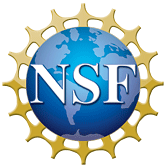Description and evaluation of a new four-mode version of the Modal Aerosol Module (MAM4) within version 5.3 of the Community Atmosphere Model
To Access Resource:
Questions? Email Resource Support Contact:
-
opensky@ucar.edu
UCAR/NCAR - Library
| Resource Type | publication |
|---|---|
| Temporal Range Begin | N/A |
| Temporal Range End | N/A |
| Temporal Resolution | N/A |
| Bounding Box North Lat | N/A |
| Bounding Box South Lat | N/A |
| Bounding Box West Long | N/A |
| Bounding Box East Long | N/A |
| Spatial Representation | N/A |
| Spatial Resolution | N/A |
| Related Links | N/A |
| Additional Information | N/A |
| Resource Format |
PDF |
| Standardized Resource Format |
PDF |
| Asset Size | N/A |
| Legal Constraints |
Copyright 2016 Authors. This work is distributed under the Creative Commons Attribution 3.0 License. |
| Access Constraints |
None |
| Software Implementation Language | N/A |
| Resource Support Name | N/A |
|---|---|
| Resource Support Email | opensky@ucar.edu |
| Resource Support Organization | UCAR/NCAR - Library |
| Distributor | N/A |
| Metadata Contact Name | N/A |
| Metadata Contact Email | opensky@ucar.edu |
| Metadata Contact Organization | UCAR/NCAR - Library |
| Author |
Liu, X. Ma, P. Wang, H. Tilmes, Simone |
|---|---|
| Publisher |
UCAR/NCAR - Library |
| Publication Date | 2016-02-08T00:00:00 |
| Digital Object Identifier (DOI) | Not Assigned |
| Alternate Identifier | N/A |
| Resource Version | N/A |
| Topic Category |
geoscientificInformation |
| Progress | N/A |
| Metadata Date | 2025-07-11T20:51:15.917594 |
| Metadata Record Identifier | edu.ucar.opensky::articles:18499 |
| Metadata Language | eng; USA |
| Suggested Citation | Liu, X., Ma, P., Wang, H., Tilmes, Simone, Singh, B., Easter, R., Ghan, S., Rasch, P.. (2016). Description and evaluation of a new four-mode version of the Modal Aerosol Module (MAM4) within version 5.3 of the Community Atmosphere Model. UCAR/NCAR - Library. https://n2t.org/ark:/85065/d7ng4s8g. Accessed 04 October 2025. |
Harvest Source
- ISO-19139 ISO-19139 Metadata

